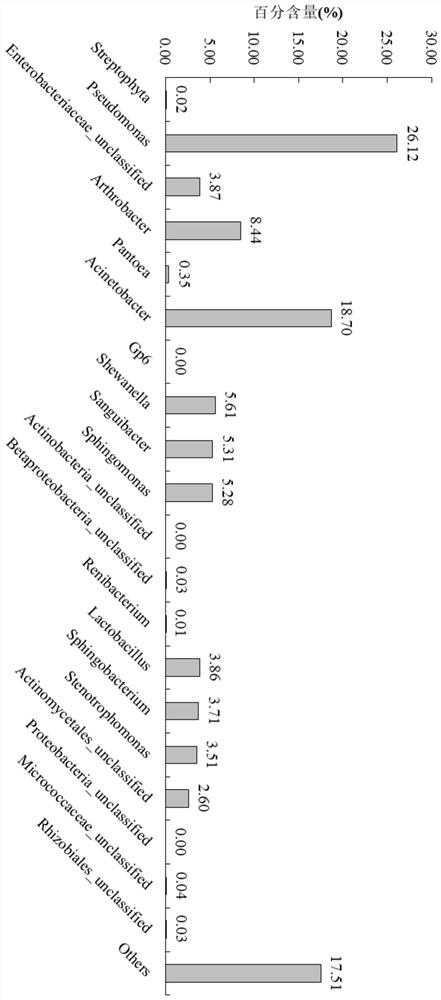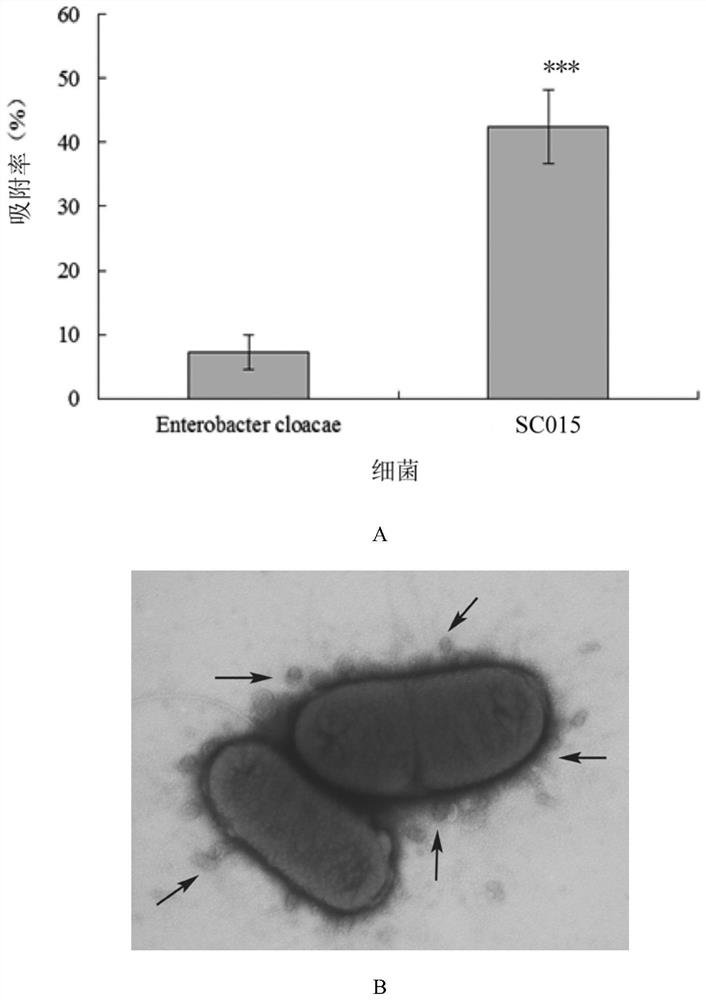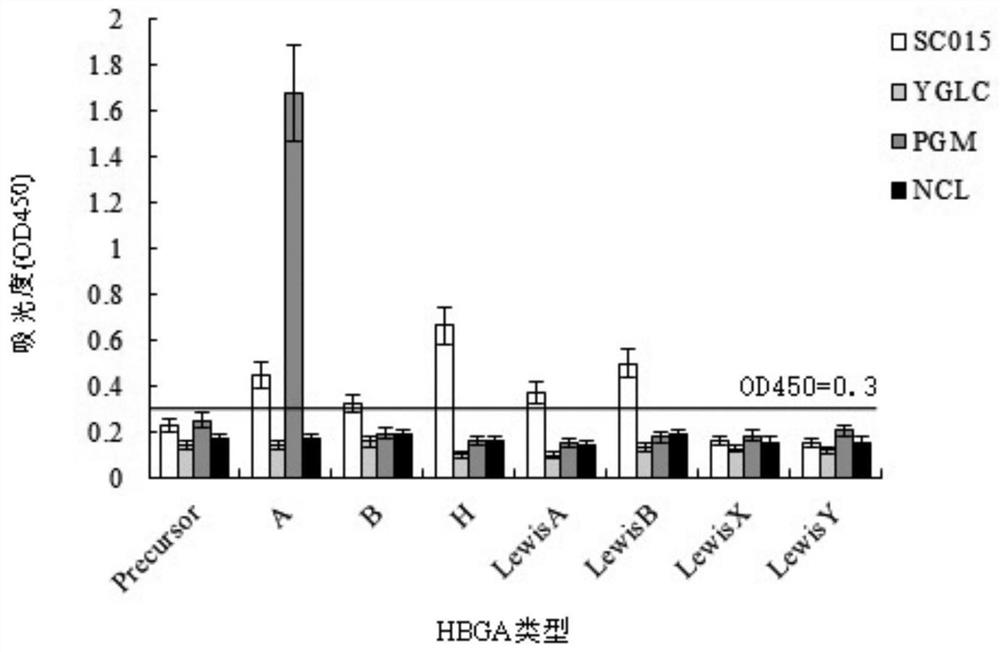Sphingobacterium SC015 and application thereof in preparation of norovirus adsorbent
A technology of sphingosine bacteria and viruses, applied in the field of norovirus adsorption and removal, can solve problems affecting economic development and social stability, and achieve the effect of improving adsorption efficiency
- Summary
- Abstract
- Description
- Claims
- Application Information
AI Technical Summary
Problems solved by technology
Method used
Image
Examples
Embodiment 1
[0034] Example 1: Screening of norovirus-adsorbed bacteria on the surface of lettuce
[0035] Before separating and screening norovirus-binding bacteria in the lettuce sample, the bacteria screening container and the like were sterilized (high temperature and high pressure sterilization treatment).
[0036] 1. Pretreatment of lettuce samples
[0037] Rinse lettuce (var.ramosa Hort.) leaf surface and leaf sheath with distilled water, use sterilized scissors to randomly take lettuce leaves and leaf sheath 5g into a conical flask, then add 50mL of PBS buffer solution, use glass rod to stir for 5min, double Filter the bacterial suspension with a layer of gauze, centrifuge at 5000rpm for 5min, discard the supernatant, resuspend the pellet with 2ml of PBS, centrifuge at 1000rpm for 1min, and collect the supernatant.
[0038] 2. Screening of bacteria expressing HBGAs
[0039] Add 50 μL of three anti-human tissue serum antigen A, B, (O)H mouse monoclonal antibody dilutions prepared ...
Embodiment 2
[0054] Example 2: Biological Identification of Strain SC015
[0055] 1. Morphological characteristics of the strain
[0056] (1) Morphological characteristics of colony population: Streak inoculation of monoclonal colony of strain SC015 onto TSA solid medium, place the plate upside down in a constant temperature incubator, and incubate at 27°C for 4-5 days. The colony is round, milky yellow and opaque, with a smooth and moist surface , slightly convex in the center, regular edges, no halo, diameter 3-5mm, see Figure 4 .
[0057] (2) Individual morphological characteristics of the bacteria: Gram staining was carried out on the bacterial strain SC015, and observation by an optical microscope showed that the bacterial strain was a rod-shaped, Gram-negative bacterium.
[0058] 2. Strain 16Sr RNA analysis
[0059]Bacterial Genomic DNA Extraction Kit (QIAGEN) was used to extract the genomic DNA of strain SC015. Using the DNA as a template, the 16S rRNA fragment of the bacterial ...
Embodiment 3
[0068] Embodiment 3: Sphingobacterium SC015 bacterial liquid
[0069] 1. Sphingobacterium SC015 culture: Sphingobacterium SC015 was inoculated into TSA solid medium, placed in a constant temperature incubator at 25°C, and cultured statically for 4-5 days. The bacteria are picked and inoculated into TSB liquid medium, cultured at 25° C. and 220 rpm on a shaker for 4-5 days to obtain seed liquid.
[0070] 2. Preservation of Sphingobacterium SC015 strains: put 1mL of 40% glycerin into a glycerol tube for high-pressure steam sterilization, take 1mL seed liquid and put it into a glycerin tube with a pipette gun and mix well to make the glycerin concentration reach 20% , marked and pre-cooled at 4°C for 30 minutes, and then stored in a -80°C refrigerator.
[0071] 3. Fermentation culture of Sphingobacterium SC015: inoculate the seed solution of Sphingobacterium SC015 with an inoculum volume concentration of 5% into a Erlenmeyer flask containing a fermentation medium, and cultivate ...
PUM
| Property | Measurement | Unit |
|---|---|---|
| Aperture | aaaaa | aaaaa |
| Diameter | aaaaa | aaaaa |
Abstract
Description
Claims
Application Information
 Login to View More
Login to View More - R&D
- Intellectual Property
- Life Sciences
- Materials
- Tech Scout
- Unparalleled Data Quality
- Higher Quality Content
- 60% Fewer Hallucinations
Browse by: Latest US Patents, China's latest patents, Technical Efficacy Thesaurus, Application Domain, Technology Topic, Popular Technical Reports.
© 2025 PatSnap. All rights reserved.Legal|Privacy policy|Modern Slavery Act Transparency Statement|Sitemap|About US| Contact US: help@patsnap.com



